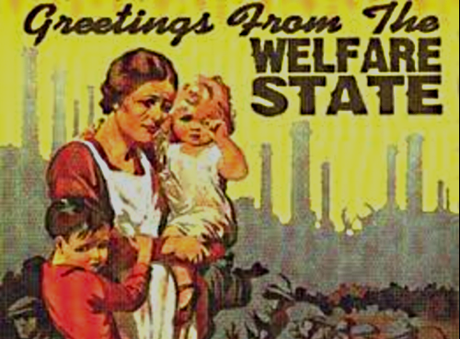 ZeroHedge published an article entitled, “Now The Pain Begins: S&P, Moodys Cut Illinois To Near Junk, Lowest Ever Rating For A U.S. State.” The article dealt with Illinois’ growing financial problems.
ZeroHedge published an article entitled, “Now The Pain Begins: S&P, Moodys Cut Illinois To Near Junk, Lowest Ever Rating For A U.S. State.” The article dealt with Illinois’ growing financial problems.
Excerpts:
“Today, in the span of a few hours, two credit-rating agencies (first S&P, then Moody’s) downgraded Illinois bonds to BB+ and Baa3, respectively—both just one notch above junk, the lowest rating ever given to a U.S. state. Both agencies cited Illinois’ long-running political stalemate over a state budget as showing no signs of ending.
“S&P warned that Illinois is at risk of soon losing its investment-grade status, an unprecedented step for a state that would only deepen the government’s strain. Bypassing its traditional 90-day review, S&P said Illinois will likely be downgraded around July 1, when the new fiscal year begins, if leaders haven’t agreed on a budget that starts addressing the state’s chronic deficits.
The problem seems serious. S&P is giving Illinois only 30 days to rectify its fiscal problems rather than the usual 90 days.
“S&P analyst Petek’s ire was prompted by Illinois’ inability to pass a budget for the past two years amid a clash between the Democrat-run legislature and Republican Governor Bruce Rauner. The ongoing confrontation has left the fifth most-populous US state with a record $14.5 billion of unpaid bills, ravaged entities like universities and social service providers that rely on state aid and undermined Illinois’s standing in the bond market, where investors have demanded higher premiums for the risk of owning its debt, Bloomberg reported.”
Illinois’ population is 12.6 million.
Divide Illinois’ total reported debt ($14.5 billion) by the state population (12.6 million) and the result is a state per capita debt of $1,150. That means each Illinoisan’s fair share of the state debt is about $1,150. That’s about $4,600 for a family of four.
That doesn’t sound like an insurmountable burden. If that debt could be paid over the next five years, it would cost each Illinoisan $230/year or about 63 cents per day. A family of four would have to pay an extra $920/year.
That debt doesn’t sound so terrible to me. Yes, that sum of extra taxes paid to state government would be annoying–or even oppressive for individuals and families living hand-to-mouth.
Still, that debt doesn’t seem large enough to precipitate some sort of state-wide, fiscal calamity. Perhaps, Illinois is crying “wolf!,” when there’s only some puppies on the loose that aren’t house-trained.
Even so, let’s assume Illinois’ financial problems really are as serious as some suppose. If a per capita debt of just $1,150 is enough to throw the state of Illinois into chaos, what can we infer about the U.S. National Debt?
I.e., what’s our $20 trillion National Debt average out to, if it’s equally divided among 320 million Americans?
Let’s do the math. Divide the National Debt ($20 trillion) by the American population (320 million) and the quotient averages out to $62,500 per capita! (And that assumes the National Debt really is only about $20 trillion. Some credible source claim that, including unfunded liabilities, the National Debt is actually over $200 trillion.)
Illinois appears to be cratering over a state debt of $1,150 per capita. Everyone is getting excited.
But nobody seems much concerned about a National Debt that averages $62,500/person. Are you beginning to see my point?
More math: Let’s divide the per capita U.S. National Debt ($62,500) by the Illinois per capita debt ($1,150). Result? 54. On a per capita basis, the U.S. National Debt is 54 times higher than the per capita debt for Illinois.
If Illinois really is in deep financial do-do due to a per capita debt of $1,150, can there be much doubt that the U.S. National Debt (54 times higher on a per capita basis) and the U.S. economy are headed for insolvency and bankruptcy?
Plus, could it be that the financial debacle in America’s 5th most-populous state turns out to be the “Black Swan” that triggers a national financial collapse?
And, what, pray tell, should a legitimate bond-rating be for U.S. bonds if the Illinois bonds are rated nearly “junk” and the U.S. per capita National Debt is (proportionally) 54 times higher?
If Illinois is really cratering, do you really want to buy U.S. bonds as a “safe haven”?
“The bond-rating downgrades came a day after Illinois’s Democratic legislature blew the deadline for approving a compromise budget by a simple majority. Now, it gets even more difficult as it will take a higher threshold, or three–fifths majority vote in each legislative chamber, to pass anything. That effectively guarantees that one month from today Illinois will be America’s first ever Junk–rated state.”
The Illinois legislature couldn’t come up with just a 51% vote to approve a compromise budget. Now they’ll have to come up with a 60% vote. Apparently, Illinois has a death wish.
60% will be harder than 51%. But, they could do it. Once they’re desperate enough, they will do it because they must do it. But how much trauma will be inflicted on the people of Illinois before their state legislature finally votes to do what must be done?
Q: What must be done?
A: Raise taxes and/or cut benefits and/or repudiate the debt.
“By June 30, the state will owe an estimated $800 million in interest and fees on the unpaid bills that have been piling up, according to estimates from Comptroller Susana Mendoza, a Democrat. She warned of “dire” consequences for residents if a budget isn’t reached by the start of fiscal year 2018 on July 1, including the shuttering of more social service providers and layoffs at public universities.
“Illinois, like other states, has no ability to resort to bankruptcy to escape from its debts.
“We’re going to start to see some real pain now,” Senate President John Cullerton told reporters in Springfield on Wednesday. “We’re going to start to see downgrades. We don’t have any funding for schools. We don’t have any funding for a bunch of social programs. We don’t have a budget.”
The collectivists’ welfare state is collapsing under the weight of debt incurred by exorbitant political promises. People who currently expect to receive their welfare entitlements, government subsidies and pensions, will be furious when they can’t get their promised fiscal “fix”. They will scream. They will march. They’ll break windows. They’ll riot. They will set fires. Neighborhoods and even cities could burn. People who are actually productive, live within their means and don’t depend on welfare, subsidies and pensions, will demand more “law and order”.
Does this imply that today’s overly-indebted welfare state will necessarily lay the foundation for tomorrow’s police state?
Yes.
Welfare states generate huge, unpayable debt. Unpayable debt precipitates police states.

